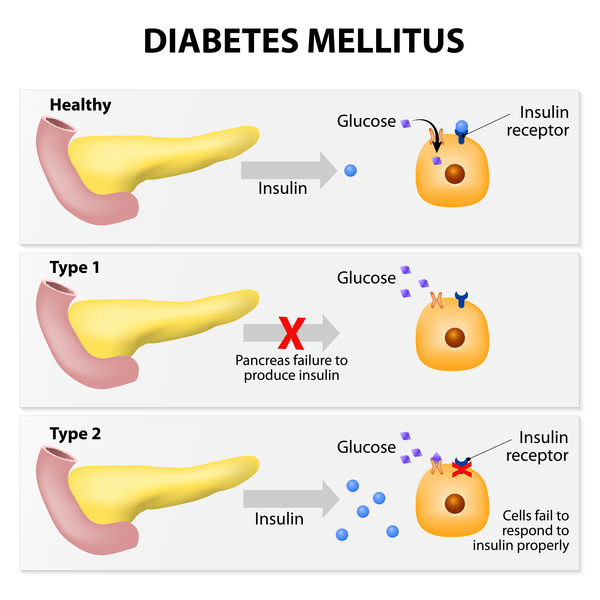Diabetes is a condition that affects how your body uses blood sugar (glucose). Glucose is vital because it’s a primary energy source for the cells that make up your muscles and tissues. It’s also your brain’s main fuel. However, diabetes throws a wrench into how this process works. While both Type 1 and Type 2 diabetes involve glucose and insulin, the key player in this process, they are quite distinct in their causes, onset, and how they’re managed.
What is Type 1 Diabetes?
Imagine your body as a car, and insulin as the key that starts the engine. In Type 1 diabetes, your body’s immune system, which normally fights harmful bacteria or viruses, attacks and destroys the insulin-producing cells in the pancreas.
It’s as if someone has stolen the keys (insulin), and now glucose can’t get into the body’s cells. People with Type 1 diabetes don’t produce insulin and need to take insulin every day to survive. This type usually develops in children and young adults, which is why it was previously called juvenile diabetes, but it can occur at any age.
How does it differ from Type 2?
Now, if Type 1 is about not having the keys, Type 2 diabetes is more like having a broken key fob. Your body either resists the effects of insulin — meaning the signal to get glucose into the cells isn’t as strong — or doesn’t produce enough insulin to maintain a normal glucose level.
Unlike Type 1, Type 2 diabetes is more closely linked to lifestyle factors and genetics and is more common in adults, though it’s increasingly seen in children, teens, and young adults due to rising obesity rates. Due to unhealthy lifestyle I developed Type 2 Diabetes and am using a combination of medication (Metformin) and new lifestyle choices to manage it hopefully into remission.

